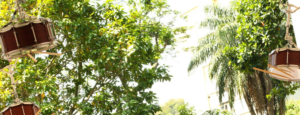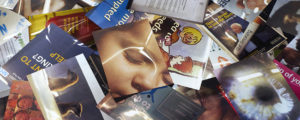For one wild moment, I see the stash of electric torches lined up beside Rachel Harrison’s plaster kettle-bell and think to myself ‘those are for when the electricity fails’. It’s a way more fun program for viewing art, to consider which would be most useful in an apocalypse. We’re spared the Brexit art, for the most part, and in fact, it’s depressingly un-apocalyptic, business as usual with the prediction of good sales due to the drop in the Pound. I do overhear a group of New Yorkers greet each other like kids back on the first day of school: “It’s so nice to have you back in Europe!” says one brightly. “Well, near Europe, anyway”, is the offhand response. I don’t know why I somehow expected some sign of the times, but for the most part the 2016 Frieze Art Fair offers inoffensively scaled, inoffensively sited wall-based works. Not that anyone should ever use a temporary mall spruiking trinkets for the rich as a political barometer.
Speaking of apocalypse, everyone I meet mentions Jon Rafman’s huge ouroboros set for virtual reality headsets in Seventeen Gallery’s bright yellow room, which I unbelievably manage to miss even upon repeated circuits of the fair. When I finally seek it out and, though skeptical of the thirty-minute queue, I’m pleasantly surprised to find it worth the wait, belying the couple behind me who leave, sniffing: “They don’t look like they’re having much fun in there!”
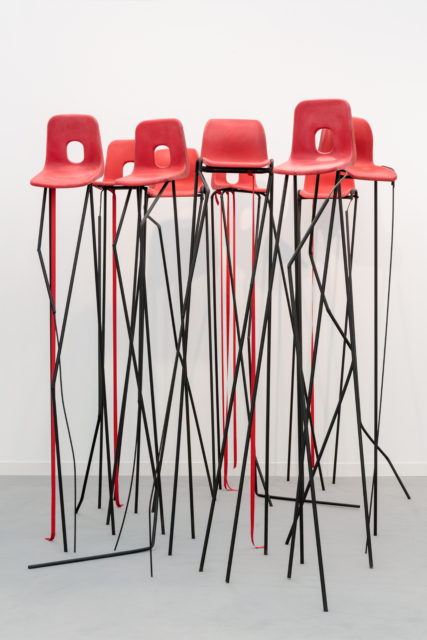
Of course the work, ‘Transdimensional Serpent’, relies heavily on the assured novelty value of new technology, but it does give some real moments of wonder. One highlight is when, inside the VR headset and looking up to see not the white roof of the tent but a host of silhouetted bodies far above as though floating on the surface of water. Without any narrative linking the scenes, it feels a little too much like an opportunity to show off a couple of cool set pieces: a dim alleyway in a menacing city gives way without warning to a desert landscape with figures dancing around a bonfire, or a rainforest to an empty grid.
In the context of an art fair, it’s refreshing to find an artist effectively harnessing the cinematic experience of thrill and awe that still remains in new digital devices. On the other end of the tech-spectrum I find the work of Yuri Pattison, winner of the Frieze Artist Award 2016, frustratingly dense, no matter how long I spend with it. Made up of a series of monitors installed around the fair and, according to the press release, live-updating according to data from the ‘fair environment’, Pattison’s work — perhaps intentionally — almost blends in with the plethora of screens and advertisements already bombarding the viewer from every angle.

The queue for the Rafman came with its own unofficial performance, as a pair with camera equipment are being asked firmly by staff to leave. I gather they’ve been asking inappropriate political questions of the fair denizens and someone’s complained. “You are totally destroying the integrity of the fair!” says the cameraman facetiously. The artist Patrick Goddard is also walking around with a GoPro strapped to his head filming for a future project, though either he’s known enough to be allowed or isn’t asking difficult questions. Nearby, a child is snap-chatting all proceedings too, clucked over by his doting mother: “He’s videoing the video! Oh, darling, that’s so clever!”
Certain single sculptures manage to cling onto some of their un-wordy strangeness, though in the too-bright and crammed booths it’s something of a struggle, like birds in the zoo. Helen Marten’s assemblage of objects appears like a cyber baby-buggy at Greene Naftali and, at 47 Canal, Anicka Yi’s infectious skin-fold lamps have their air of contagion somewhat neutered by the plush grey carpet.
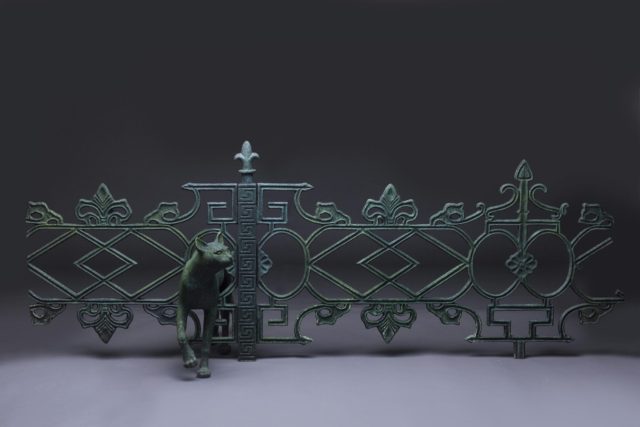
Throughout the duration of the fair, Goshka Macuga’s bunker-like concrete construction at Rüdiger Schöttle apparently serves as a setting for debate and discussion, but each time I pass it’s occupied only by a handful of vases, the silent heads of political figures from the past sprouting greenery. It’s supplemented by a packed performance at David Roberts Art Foundation the following night, featuring two dancers moving on a pair of enormous conveyor belts.
Ryan Gander apparently curated Limoncello ’s offering with a pair of dice, and its lighthearted moments include Vanessa Billy ’s puddles of resin cast in cardboard boxes and Bedwyr Williams’ sweet and weird box made head-like with a wig. David Musgrave’s glass jellyfish at Greengrassi is also charming, crammed in a corner.
Curated by Nicolas Trembley, a special The Nineties section of the fair this year is devoted to re-staging exhibitions from that decade. At Massimo de Carlos’ booth a friend rolls up an interminably large Felix Gonzalez-Torres print, it’s almost blank bar a tiny square of text in the centre, from a stack on the floor, feeling guilty even as the attendant smiles encouragingly. Andrea Zittel’s trail mix pot-pourri next to it is apparently not for public consumption, likewise the inviting Dominique Gonzalez-Foerster installation inspired by Rainer Werner Fassbinder’s bedroom, which provides a sexy moment of dim brown seventies decor.
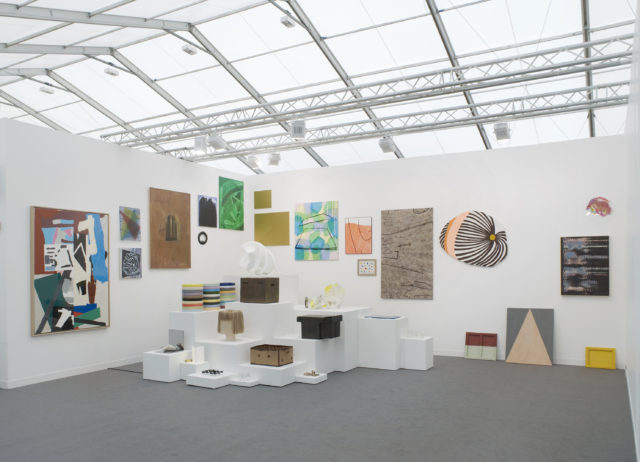
Jesse Darling’s precariously advancing school chairs, March of the Valedictorians, at Arcadia Missa are wobbly in a tough, formidable way, like a pack of small animals baring their teeth, and feel like a reminder of the constant activation of the border in the institution. They shudder a little on their long legs as people pass. Magician Space from Beijing lives up to its name, with shadows and wrought iron outdoor chairs by Liu Chuang, cloth moving lightly from a fan. Even the simplest diversion from the uniform strip-lighting of the Frieze tent provides welcome respite. I’m also caught in the beam of the shifting, flickering star in Rodeo’s booth, flicking over a church noticeboard by Duncan Campbell with a poem pinned inside. The woman in the booth describes it as a vitrine and her use of the word annoys me; this has a grimy, forlorn quality, quite removed from the pristine glass cases throughout the rest of the fair.**
